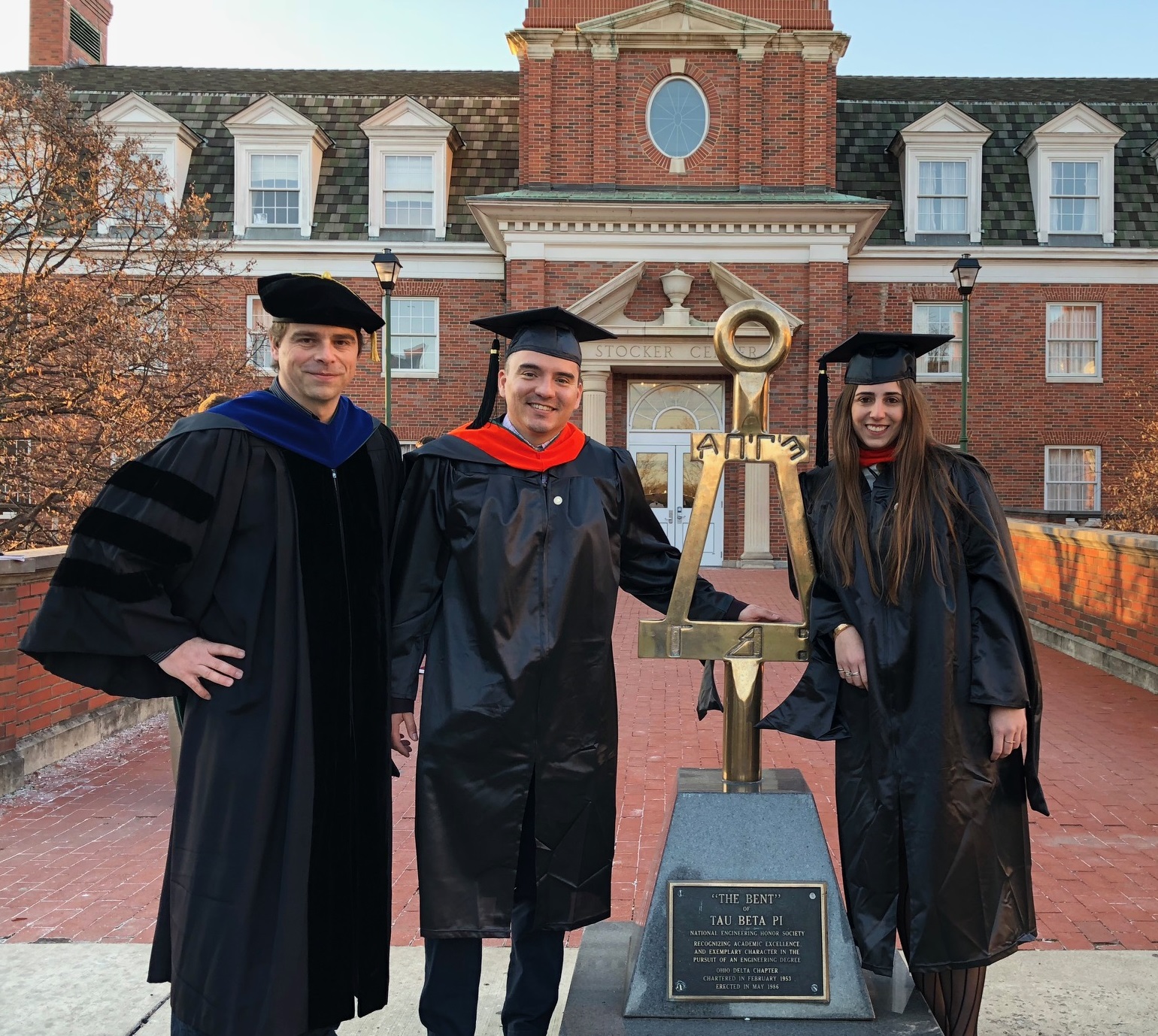|
ICMT Students Roberto Ruiz and Maria Di Bonaventura Furno attend Commencement on December 16th, 2017
|
After both graduating with a MS degree in Chemical Engineering from Ohio University, Roberto Ruiz (MS 2017) and Maria Di Bonaventura Furno (MS 2017) came back to Athens on December 16th to attend Commencement. They can be seen in the picture in full academic regalia with their advisor Dr. Mark Singer.
|

|
Roberto Ruiz investigated the effect of monoethylene glycol (MEG) on CO2 corrosion mechanisms . Roberto conducted a comprehensive series of experiments in glass cell over a wide range of conditions: temperature 30oC 80ºC, of MEG content from 40, 85wt. % and of pH 3.5 - 6 at atmospheric pressure for solutions saturated with CO2 and N2, respectively. Roberto used Electrochemical techniques such as linear polarization resistance (LPR), electrochemical impedance spectroscopy (EIS), and potentiodynamic sweeps were used to obtain corrosion rates, mixed potential (Ecorr), current density (Icorr), Tafel slopes and limiting currents. The main findings were that the dissolution of iron was retarded with increasing glycol content in solution, inferring that MEG directly affect the kinetics of the anodic reaction. The effect of MEG on the net cathodic reaction, impacting both charge transfer and limiting current, seemed to be directly related to changes in solution chemistry and properties. Roberto then identified all the necessary changes in physical and electrochemical parameters needed for further implementation to the ICMT flag ship inhouse corrosion prediction software FREECORP. Roberto is now a Senior Process Engineer for the Indianapolis Active Pharmaceutical Ingredient Division at Eli Lilly.
Maria Di Bonaventura Furno investigated the effect of flow on the formation of iron carbonate and the influence of the exposed iron carbide layer . Experiments were divided in relation to three different sets of tasks focusing on high initial saturation values, low and constant saturation values, and high velocity experiments. With high initial saturation values (S(FeCO3) = 150), it was found that as the fluid velocity increased, there was less attachment of FeCO3, with the highest velocity of 2.0 m/s (wall shear stress of 7 Pa) showing no FeCO3 formation/attachment on the metal surface. With low and constant saturation values, it was observed that the carbon content and microstructure (distribution of iron carbide [Fe3C]) have a strong effect on the results with the ferritic-pearlitic steel clearly favoring FeCO3 precipitation. A critical velocity for Fe3C removal was clearly identified, which further inhibited formation of FeCO3, although it is fully expected that its value should depend on the operating conditions. Maria has a conference paper accepted for NACE2018 and she is now a Process engineer in the BP Global Projects Organization.
|
|




